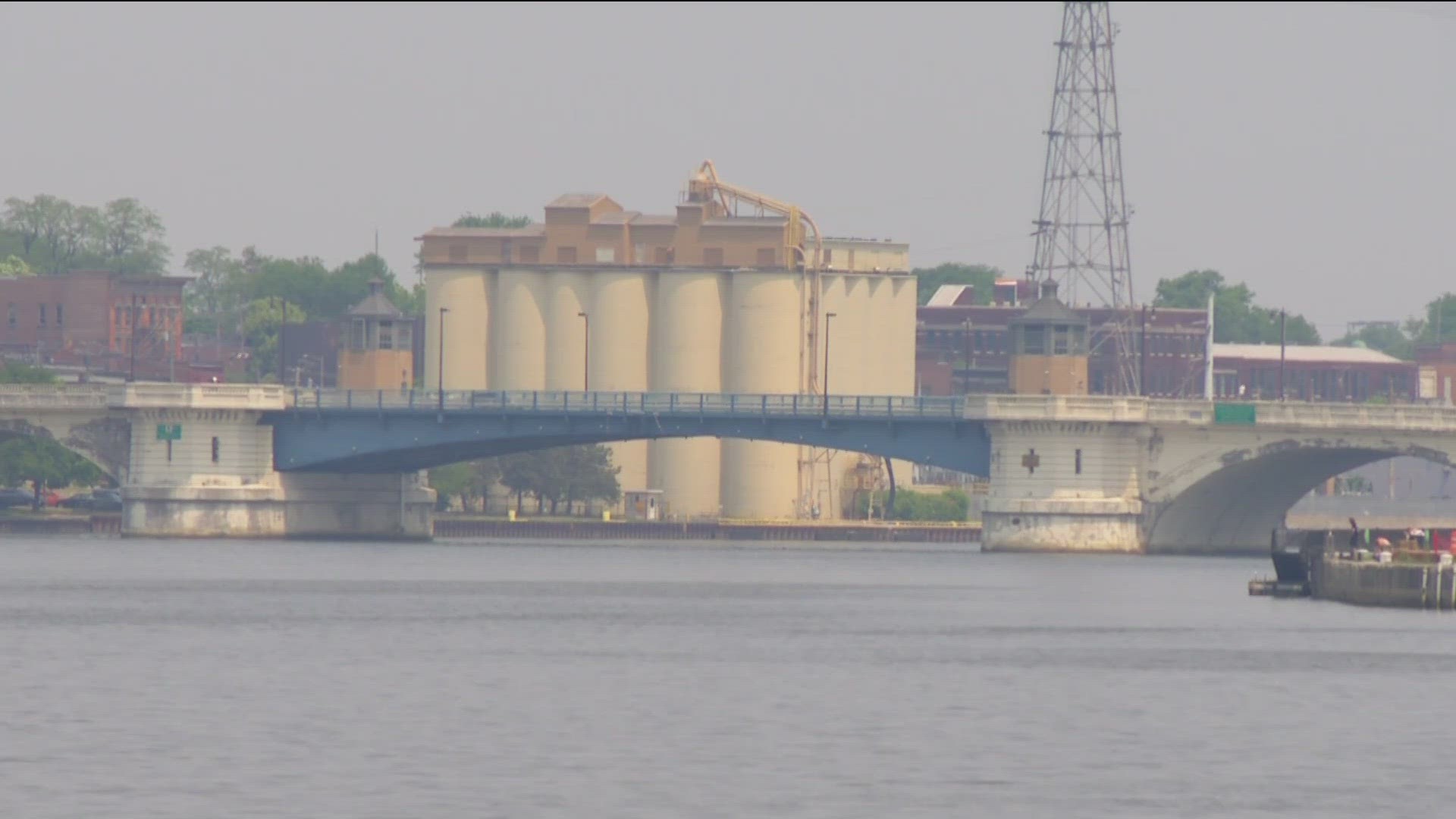TOLEDO, Ohio — Downtown Toledo may look a lot different than the hazy pictures of New York City right now, but it doesn't mean there aren't concerns regarding the wildfire smoke and air quality, which may have you wondering what precautions you should take.
ProMedica Emergency Medicine Physician Dr. Justin Pollock said it does not hurt to be a little more cautious, especially for sensitive at-risk groups affected by the second-hand smoke blown from the wildfires in Canada.
"Certainly, over the last couple of days, we've seen an increase for the amount of people coming in for respiratory-type complaints," Pollock said.
AirNow.gov measures air quality values on a scale, with 0 being good all the way up to 300 and greater, which is considered hazardous. At the time of this article, Toledo was at a 71, which is moderate, but still a risk for highly sensitive people.
Pollock said some of those individuals potentially at risk are those with a known lung disease, COPD, asthma or other similar conditions.
"If you can tell the difference between being inside and outside, obviously the inside would probably be preferred," Pollock said.
Pollock said if you are a high-risk individual, some of the symptoms you may face are shortness of breath, coughing, sneezing, sore throat, chest pains or burning eyes.
He also explained normal masks that go over your ears won't provide enough protection unless you are wearing a tight and properly fitted hospital mask. If you are at-risk, he said to avoid going outside when possible.
"Wearing just a standard hospital mask is probably not going to be enough to prevent the particles from coming around it," Pollock said.
Sylvania Schools Summer Program operated as usual Thursday. Principal Steve Swaggerty said this is the first time anything like this has ever happened, so they sent an email to students and parents beforehand.
"[We] talk to the kids about taking breaks if they felt it was necessary," Swaggerty said. "If they have an inhaler that's prescribed, make sure they bring that. There's in an indoor clubhouse at the golf course, so kids could stop."
Assistant Senior Patrol Leader of the National Youth Leadership Training for Boy Scouts of America Griffin Dixon said they went on with their training today, but planned to take extra precautions as the camp is naturally dusty.
"It really messes with the sinuses, and with a lot of yelling already, the throats get really bad," Dixon said. "So we've moved a lot of our presentations indoors where we have better air quality and we're not breathing in all that."
Pollock said air filtration in your house is also very important as particulate matter is found everywhere. If you are asthmatic, he said you should bring your inhaler with you wherever you go.
Finally, he said to call or go to your primary care physician if you have any questions or symptoms.

